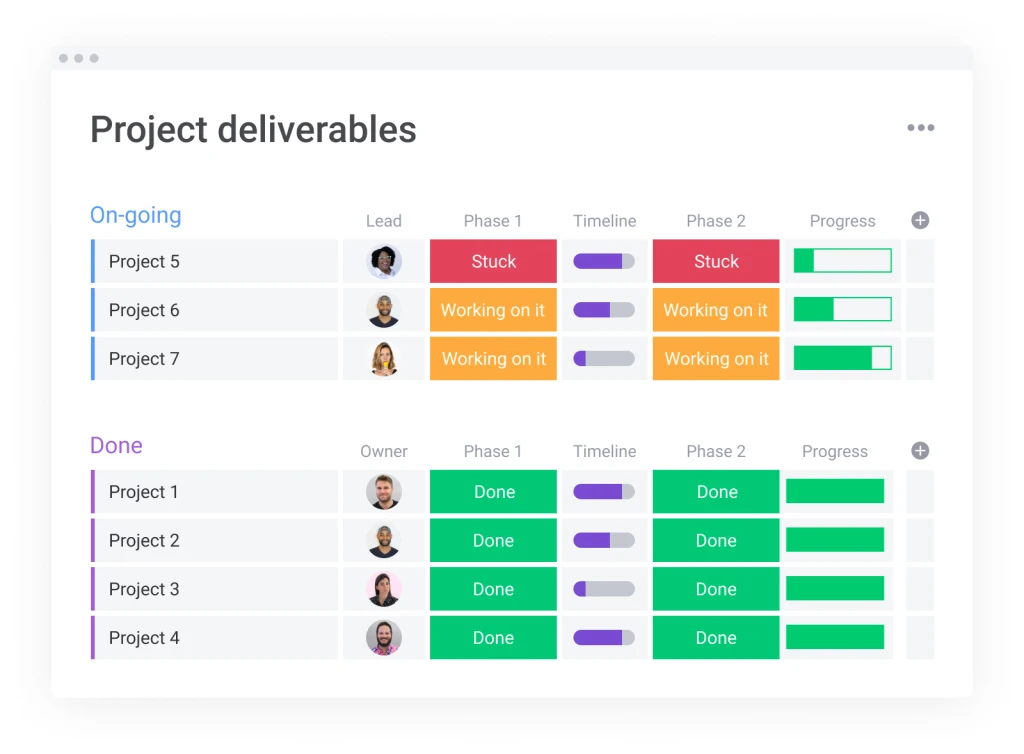What Are Project Deliverables?
Project deliverables are the specific, tangible or intangible outputs that a project is designed to produce. They’re the measurable results that demonstrate project completion and success. Think of deliverables as the promises your project makes to stakeholders—whether it’s a new software application, a marketing campaign, a construction project, or a business strategy document.

Types of Project Deliverables
Project deliverables generally fall into two main categories:
Internal Deliverables
These are the outputs created and used within the project team or organization, such as:
- Project schedules
- Progress reports
- Quality control documentation
- Team performance metrics
- Internal process documentation
External Deliverables
These are the outputs delivered to clients or external stakeholders, including:
- Final products or services
- Client reports
- Implementation documentation
- Training materials
- Performance analytics
Defining Effective Project Deliverables
Creating clear, achievable deliverables requires a structured approach:
SMART Criteria Application
Each deliverable should be:
- Specific: Clearly defined with no ambiguity
- Measurable: Progress can be tracked and completion verified
- Achievable: Realistic within project constraints
- Relevant: Aligned with project goals
- Time-bound: Associated with specific deadlines
Stakeholder Alignment
Ensure all parties agree on:
- Expected outcomes
- Quality standards
- Acceptance criteria
- Timeline requirements
- Resource allocation
Managing Project Deliverables
Successful deliverable management involves several key practices:
Clear Documentation
Maintain detailed records of:
- Deliverable specifications
- Production processes
- Quality standards
- Acceptance criteria
- Change requests
- Sign-off procedures
Regular Review Cycles
Implement systematic reviews to:
- Track progress
- Identify potential issues
- Adjust timelines if needed
- Ensure quality standards are met
- Maintain stakeholder communication
Common Challenges and Solutions
Understanding common deliverable-related challenges helps teams prepare for and overcome them:
Scope Creep
Combat expanding deliverable scope by:
- Maintaining detailed documentation
- Implementing change control processes
- Regular stakeholder communication
- Clear boundary definition
Quality Issues
Ensure deliverable quality through:
- Defined quality standards
- Regular quality checks
- Peer reviews
- Stakeholder feedback loops
Timeline Delays
Manage delivery schedules by:
- Building in buffer time
- Regular progress monitoring
- Early issue identification
- Proactive resource management
Best Practices for Deliverable Success
To maximize the effectiveness of your project deliverables:
- Start with Clear Definition: Before project execution begins, ensure every deliverable is thoroughly defined and documented. This includes specific requirements, quality standards, and acceptance criteria.
- Maintain Stakeholder Communication: Regular updates and feedback sessions help ensure deliverables remain aligned with stakeholder expectations throughout the project lifecycle.
- Use Project Management Tools: Leverage appropriate tools to track and manage deliverables effectively. This might include project management software, collaboration platforms, and documentation systems.
- Build in Quality Checks: Implement regular quality assurance processes to ensure deliverables meet or exceed expected standards.

Measuring Deliverable Success
Evaluate the success of your deliverables through:
Objective Metrics
Quantifiable measures such as:
- Completion percentage
- Quality scores
- Timeline adherence
- Budget compliance
Stakeholder Satisfaction
Gather feedback on:
- Meeting requirements
- Quality expectations
- Timeline satisfaction
- Overall value delivered
By focusing on clear definition, effective management, and continuous monitoring of project deliverables, teams can significantly improve their project success rates. Remember, well-defined deliverables aren’t just about checking boxes—they’re about creating value and meeting stakeholder expectations in a measurable, verifiable way.


